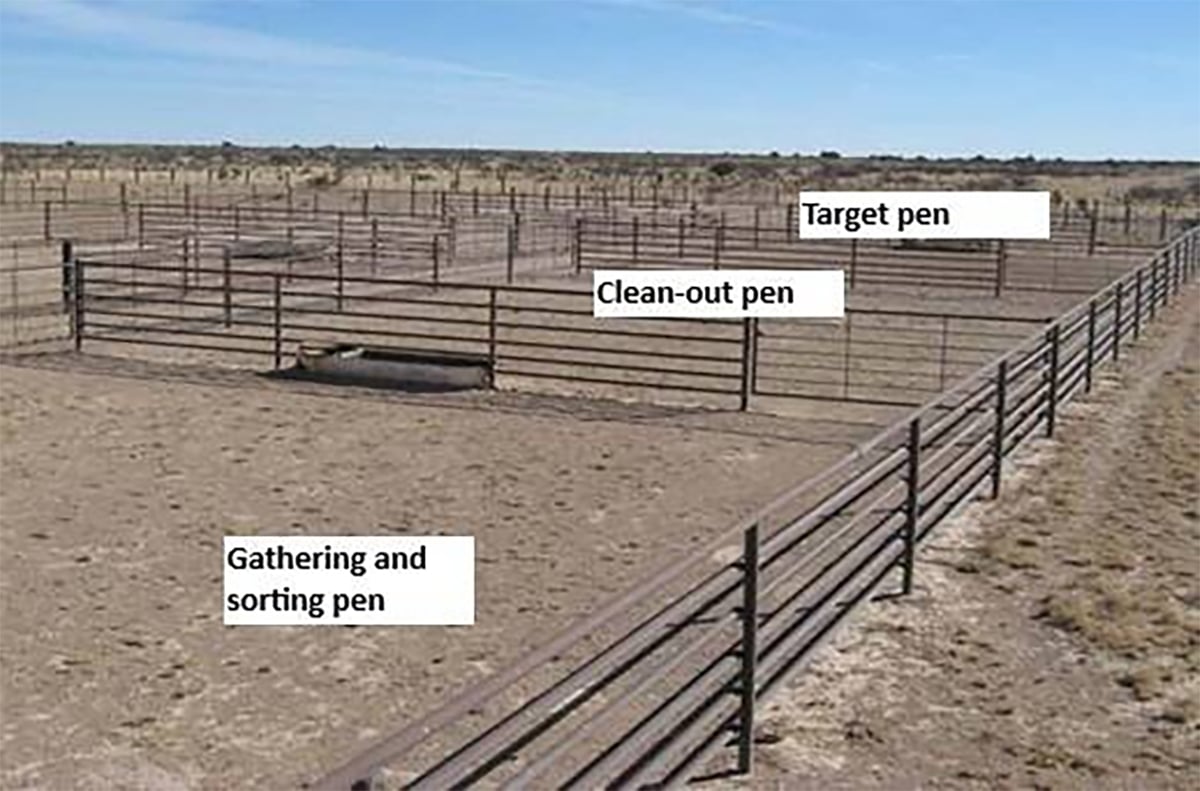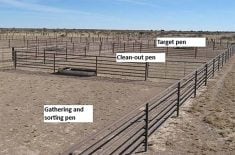COCHRANE, Alta. – With a full-bodied holler of “Sheep!” Nancy-Jean Taylor is ready to start her day.
For eight hours each day, the Cochrane shepherd, along with her two border collies and a Great Pyrennes guard dog, herd a flock of 800 ewes and lambs to a tasty meal of thistles, buckbrush and cow parsnips.
“They’ll choose bushes over grass,” Taylor said after a day of traipsing through thigh-high brush at a Girl Guides campsite south of Cochrane.
This is Bob and Nancy-Jean Taylor’s special brand of prescription grazing for troubled natural areas.
Read Also

Teamwork and well-designed handling systems part of safely working cattle
When moving cattle, the safety of handlers, their team and their animals all boils down to three things: the cattle, the handling system and the behaviour of the team.
Until a few years ago, the Taylors participated in the British Columbia forestry program.
They sent their sheep to graze clear-cut blocks near Prince George, B.C., but they weren’t satisfied with the program.
The couple returned to Alberta and started a prescription grazing service of their own.
Girl Guides is one of several clients.
The Girl Guides organization owns an 83-acre nature conservancy called Camp Jubilee.
Brush and aspen were slowly encroaching on playground and camping space.
The area, located along the Bow River, is not ordinarily grazed and the overgrowth of grass and weeds was a fire hazard during dry seasons.
Cow parsnips, dandelions, sagebrush, cinquefoil, buckbrush, willow varieties, thistles and an overgrown thatch of prairie grasses have forced out new plants.
“When you walk through here everything looks so nice but then you realize what is it you want? Do you want brush and bushes?” she said.
Last year, the Taylors took their sheep to the Cochrane Ranch site which includes the Western Heritage Centre.
Range manager Barry Adams of Alberta Agriculture prepared a grazing plan.
It outlined areas that were to be grazed and others, like sensitive riparian areas, that were to be avoided.
When producers witnessed the effectiveness of the program, the Taylors were asked to graze their sheep on private ranches where grass struggles to poke through a mass of weeds and brush.
“Every place we go has different requirements,” Taylor said.
Some producers want to keep the sheep out of watercourses while others want the animals to eat everything in sight.
Some clients even request selective grazing to preserve specific plants like wildflowers.
Grazing needs are calculated on a ratio of five sheep to one cow. Sheep eat a greater variety of plants than cattle. They shear plants down to the ground and can jump up to strip the sweet tasting bark and leaves from aspen.
Their season runs from June 1 to Oct. 31. Some grazing periods last three weeks while others extend to six weeks in one region.
A shepherd’s days are long.
The sheep eat around the clock and work continues despite the weather.
At night, the sheep are fenced in an electrified flexi-net pen that is powered by a solar panel.
One person can easily move about 2,000 feet of portable fence.
In the morning, the pen floor is stripped bare. Within two weeks that same patch shows dramatic regrowth of wild flowers and grasses.
The Taylors became farmers to diversify their family income. They bought their farm west of Cochrane in the early 1980s and eventually left their respective jobs to become full-time farmers.
“We didn’t have any farm or ranch experience. We just got a lot books and read a lot,” she said.
The couple entered the sheep business in 1988.
They started with 30 head of Rambouillet cross and eventually added Polypays and Dorsets. They also own a few Black Welsh Mountain sheep, a rare breed imported from Maryland.
Research and experience brought the Taylors to where they are today.
“We have always been willing to change,” said Taylor.
In addition to selling market lambs every fall, wool has become a good sideline.
The sheep are shorn each year and the wool is sent to Prince Edward Island to make blankets and yarn under the name Taylor Sheep and Wool Company.















